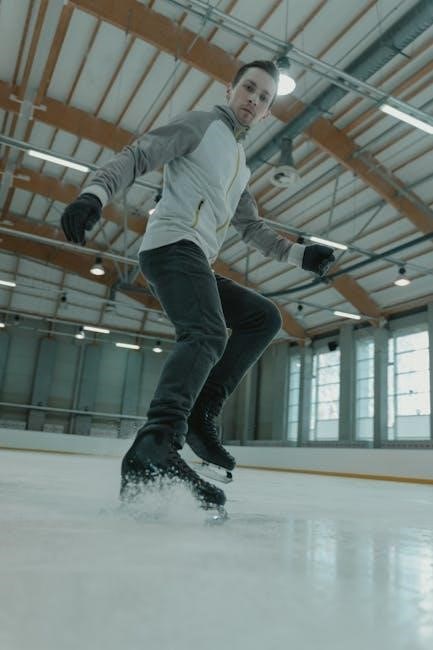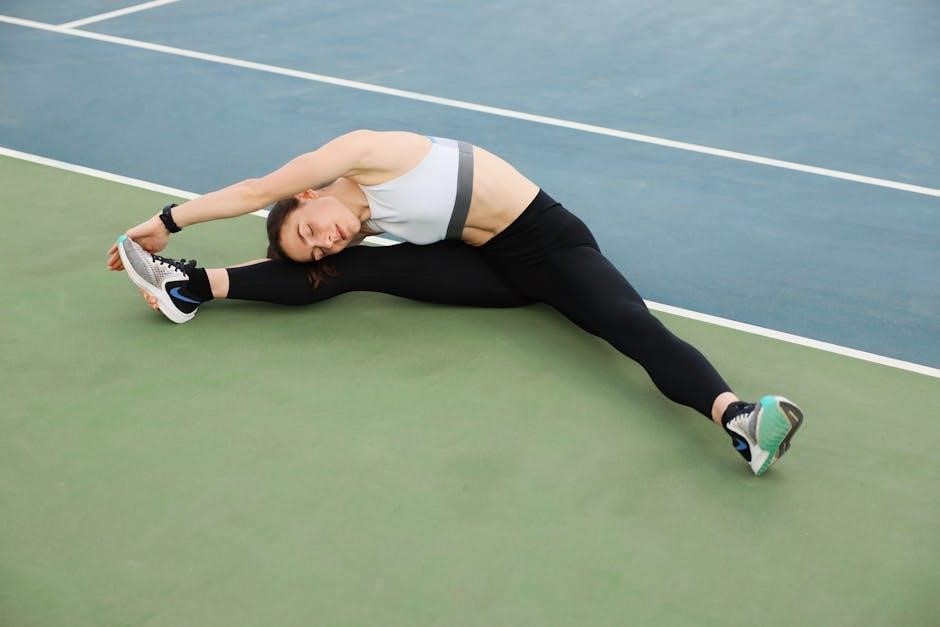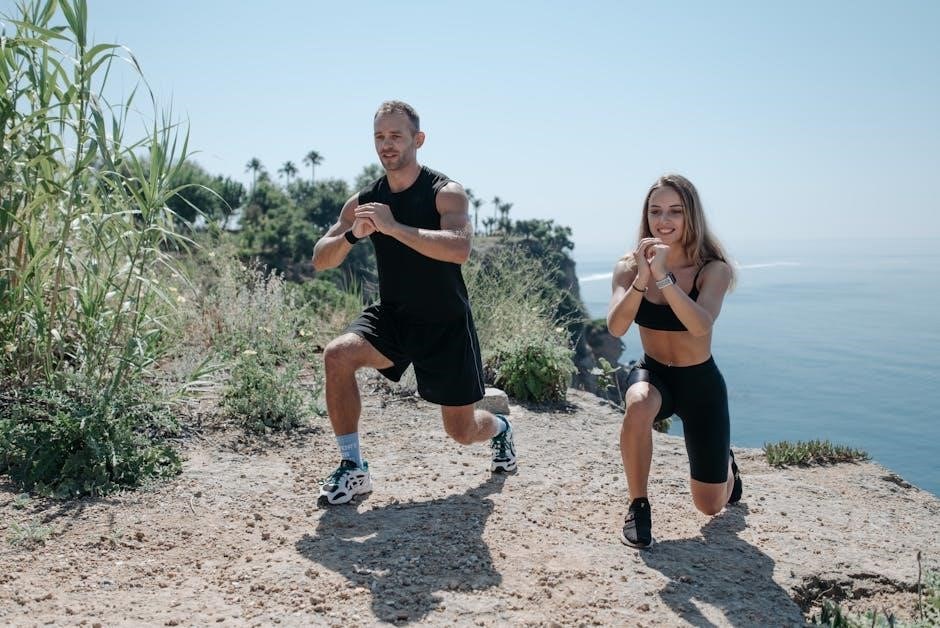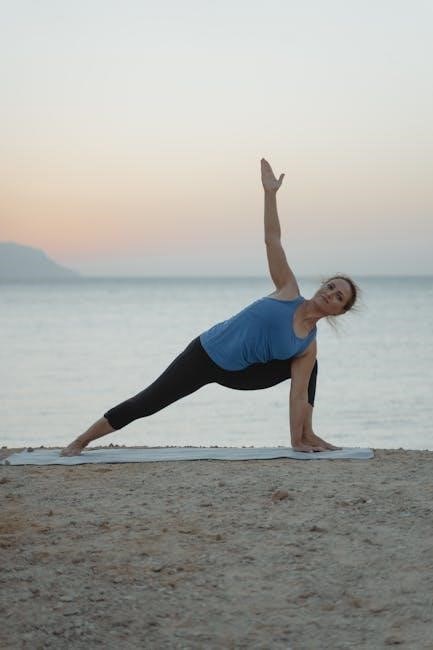Torticollis is a condition causing the neck to tilt due to muscle tightness or imbalance. It commonly affects infants‚ often due to birth position‚ and adults from injury or poor posture. Early intervention and targeted exercises are crucial for improving mobility and preventing long-term complications.
Understanding Torticollis: Causes‚ Symptoms‚ and Types
Torticollis is characterized by an abnormal neck posture due to muscle tightness or spasms. It can be acute or chronic‚ often caused by birth position‚ genetic factors‚ or muscle imbalances in infants. In adults‚ it may result from injuries‚ poor posture‚ or conditions like cervical dystonia. Symptoms include a tilted head‚ difficulty moving the neck‚ and discomfort. Types include congenital (present at birth) and acquired (developing later in life). Early identification of these factors and types is key to effective management and treatment‚ ensuring proper neck alignment and mobility are restored.

Physical Therapy and the Role of Exercises in Managing Torticollis
Physical therapy is essential for managing torticollis‚ utilizing exercises like stretching and strengthening to enhance mobility. Tailored plans by therapists improve alignment‚ reduce muscle tightness‚ and restore function.
The Importance of Early Intervention and Exercise Programs
Early intervention is critical in addressing torticollis‚ particularly in infants‚ as it significantly improves outcomes. Gentle exercises and stretches‚ when started promptly‚ can correct muscle imbalances and enhance mobility. Research indicates that babies who begin physical therapy within the first few months of diagnosis show faster recovery rates. Exercise programs tailored to the child’s needs help strengthen neck muscles‚ improve posture‚ and prevent long-term complications. Parents play a vital role by incorporating these exercises into daily routines‚ ensuring consistency and progress. Early action not only supports physical development but also promotes overall well-being and quality of life for both infants and adults with torticollis.
How Physical Therapists Develop Personalized Treatment Plans
Physical therapists create customized treatment plans for torticollis by evaluating the severity of muscle tightness‚ range of motion‚ and overall posture. They assess the child’s or adult’s specific needs‚ focusing on strengthening weak muscles and stretching tight ones. A thorough evaluation helps identify the most effective exercises and techniques. Therapists incorporate activities like gentle stretching‚ head control exercises‚ and positional strategies to encourage proper alignment. Progress is regularly monitored‚ and plans are adjusted to ensure optimal improvement. Collaboration with parents is key‚ as therapists educate them on home exercises and positioning techniques. This personalized approach ensures targeted and effective management of torticollis‚ promoting faster recovery and improved mobility.

Effective Stretching Exercises for Torticollis
Effective stretching exercises for torticollis include sternocleidomastoid stretches‚ chin tucks‚ and gentle neck rotations. These exercises improve mobility and relieve stiffness when performed 3-5 times daily.
Neck Stretching Techniques for Improved Mobility
Gentle neck stretching exercises are essential for improving mobility in torticollis cases. Start with slow‚ controlled movements‚ holding stretches for 10-15 seconds. For the sternocleidomastoid stretch‚ place one hand on the shoulder to stabilize it while gently tilting the head toward the opposite side. Repeat 3-5 times daily. Chin tucks are another effective technique‚ where the head is pulled back to align the ears over the shoulders. Incorporate side-to-side neck rotations‚ moving the chin toward the shoulder without forcing beyond comfort. Breathe deeply during stretches to relax muscles. If discomfort occurs‚ stop the exercise immediately. Regular practice enhances flexibility and alignment‚ aiding recovery and muscle balance.
Shoulder and Chest Stretches to Enhance Posture
Shoulder and chest stretches are vital for improving posture in torticollis patients. Start with shoulder rolls: roll shoulders forward and backward in a circular motion for 10 repetitions. Chest stretches involve placing hands on a wall or door frame and leaning forward to open the chest‚ holding for 15-20 seconds. Arm slides across the chest can also help release tension. Gently bring one arm across the body‚ holding for 10 seconds‚ and repeat on the other side. These exercises reduce muscle tightness‚ promote better spinal alignment‚ and enhance overall posture. Regular practice strengthens the upper body and supports long-term recovery from torticollis.

Home-Based Exercises for Parents to Aid Recovery
Parents can effectively aid their child’s recovery with simple home exercises. Gentle neck stretches‚ shoulder rolls‚ and playful activities encourage proper alignment and muscle balance‚ fostering improvement.
Simple Stretches to Perform During Daily Activities
Simple stretches can be seamlessly integrated into daily routines to aid recovery. During feeding‚ gently tilt your baby’s head to the side‚ encouraging equal movement. While changing diapers‚ perform gentle neck stretches by softly turning their head from side to side. Use playtime to incorporate exercises‚ such as placing toys slightly out of reach to encourage head rotation. These subtle movements help improve flexibility and strength without causing discomfort. Consistency is key‚ as regular practice supports long-term progress and alignment.
Using Playtime to Incorporate Gentle Exercises
Playtime offers a natural opportunity to incorporate gentle exercises for torticollis. Use toys to encourage head rotation by placing them slightly out of reach‚ prompting your baby to turn their head. During tummy time‚ position toys to one side to stimulate neck movement. Gently tilt your baby’s head while talking or singing to engage them. These activities not only aid in strengthening neck muscles but also make therapy enjoyable and effective. Consistency and playfulness are key to helping your baby recover while fostering developmental milestones.

Positioning and Daily Activities to Support Healing
Position your baby to promote proper alignment and reduce strain. During sleep‚ tilt their head to the opposite side of the tilt. Adjust the environment to encourage looking in the desired direction. Use toys and playtime to naturally encourage head rotation and muscle relaxation‚ making therapy fun and effective.
Optimal Sleeping and Sitting Positions for Recovery
For infants with torticollis‚ proper positioning is key. Place your baby in their crib so they must look to the affected side to see toys or adults. Use a firm mattress and avoid soft bedding. During sleep‚ gently tilt their head to the opposite side of the tilt. When sitting‚ ensure your baby is upright with support and encourage looking in the desired direction. Avoid prolonged periods in car seats or swings‚ as this can worsen the condition. For adults‚ maintain good posture and avoid prolonged screen time. Adjust your workspace to promote neutral neck alignment and take regular breaks to stretch.
Modifying Play and Feeding Positions to Encourage Proper Alignment
Adjusting play and feeding positions can significantly aid in correcting torticollis. During play‚ place toys or objects on the side opposite the head tilt to encourage your child to look and stretch in that direction. For feeding‚ position your child so they must turn their head to the affected side to see you. This helps strengthen the weaker muscles. In playtime‚ hold your child upright with support‚ tilting their body gently to the side to promote proper neck alignment. Avoid letting them favor one side during activities. These simple adjustments can enhance recovery and improve posture over time.

Preventing the Progression of Torticollis
Regular stretching exercises‚ proper positioning‚ and monitoring progress can prevent torticollis from worsening. Early intervention and consistent practice are key to maintaining proper neck alignment and muscle balance.
Monitoring Progress and Adjusting Exercises Appropriately
Regularly monitoring a child’s progress in torticollis treatment is essential. Parents and therapists should track improvements in neck mobility and muscle balance. Adjusting exercises based on progress ensures effectiveness. For instance‚ if a child shows increased range of motion‚ exercises can be advanced to strengthen further. Conversely‚ if progress stalls‚ consulting a physical therapist to modify the routine is crucial. Consistent documentation of sessions helps identify patterns and necessary adjustments‚ ensuring personalized care. Open communication between parents and healthcare providers fosters a collaborative approach‚ tailoring exercises to meet the child’s evolving needs and promoting optimal recovery.
Activities to Strengthen Neck Muscles and Improve Flexibility
Strengthening neck muscles and improving flexibility is crucial for managing torticollis. Gentle head tilts and rotations can enhance range of motion. For infants‚ incorporating playtime activities like placing toys out of their line of sight encourages natural neck movement. Shoulder rolls and chest stretches also help reduce muscle tightness. Parents can use play-based exercises‚ such as supported sitting with toys‚ to promote active engagement. As the child progresses‚ exercises can be gradually intensified to build strength and endurance. Consistency and patience are key‚ as gradual improvements in neck flexibility and muscle balance are often seen over time with dedicated practice.

When to Seek Professional Help
Consult a healthcare professional if your child shows persistent neck tilting‚ limited progress with exercises‚ or developmental delays. Severe discomfort or lack of improvement warrants expert evaluation.
Recognizing Signs That Require Medical Attention
If your child exhibits persistent neck tilting‚ limited range of motion‚ or developmental delays despite exercises‚ seek medical help. Signs like visible neck muscle tightness‚ head flattening‚ or difficulty turning the head warrant professional evaluation; If your baby shows discomfort during exercises or fails to improve with home stretches‚ consult a pediatrician or physical therapist. Severe cases may require orthotic devices or further intervention. Early detection and treatment are critical to prevent long-term complications and promote full recovery. Regular monitoring and adapting exercises can help address these concerns effectively.